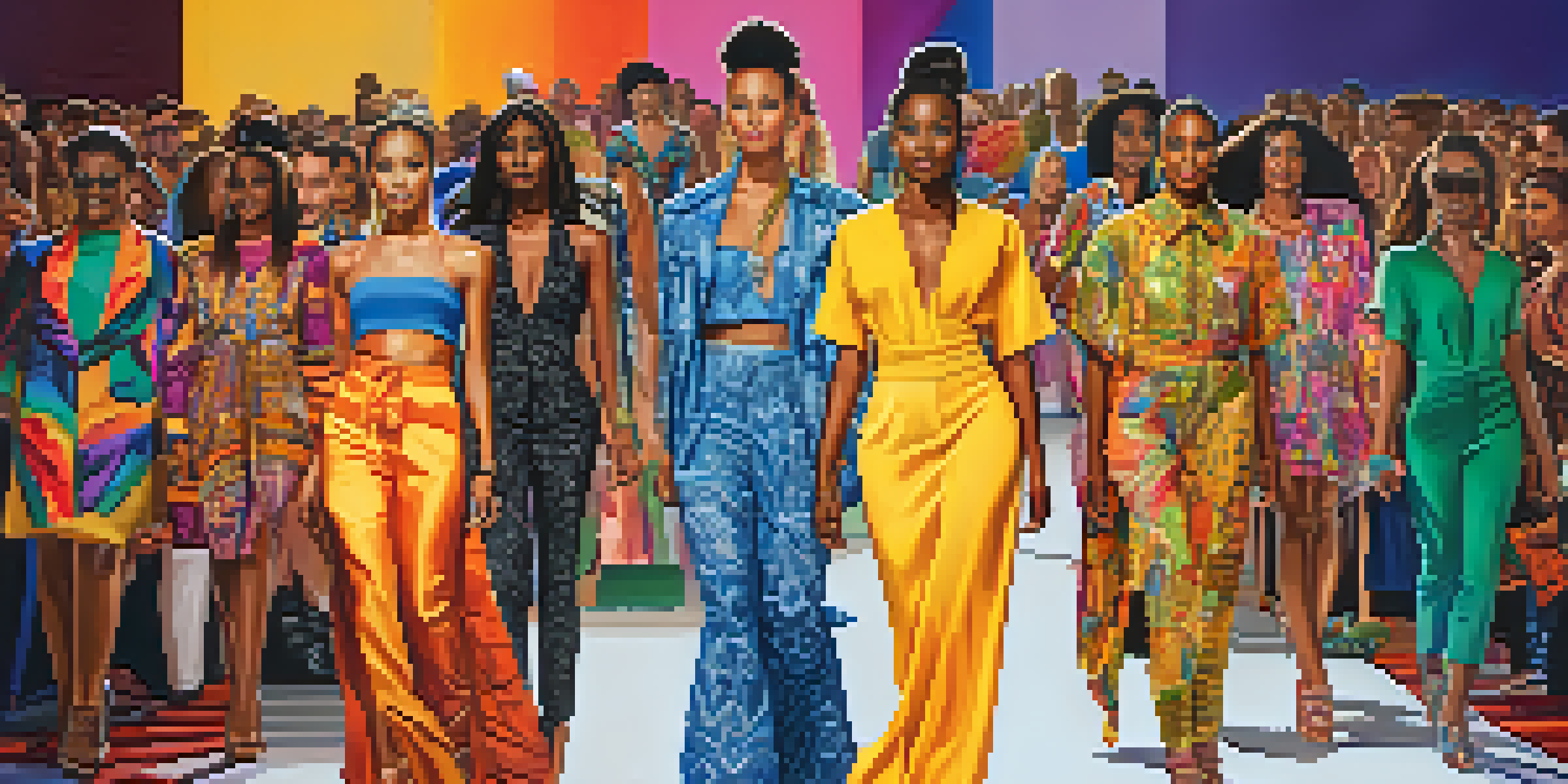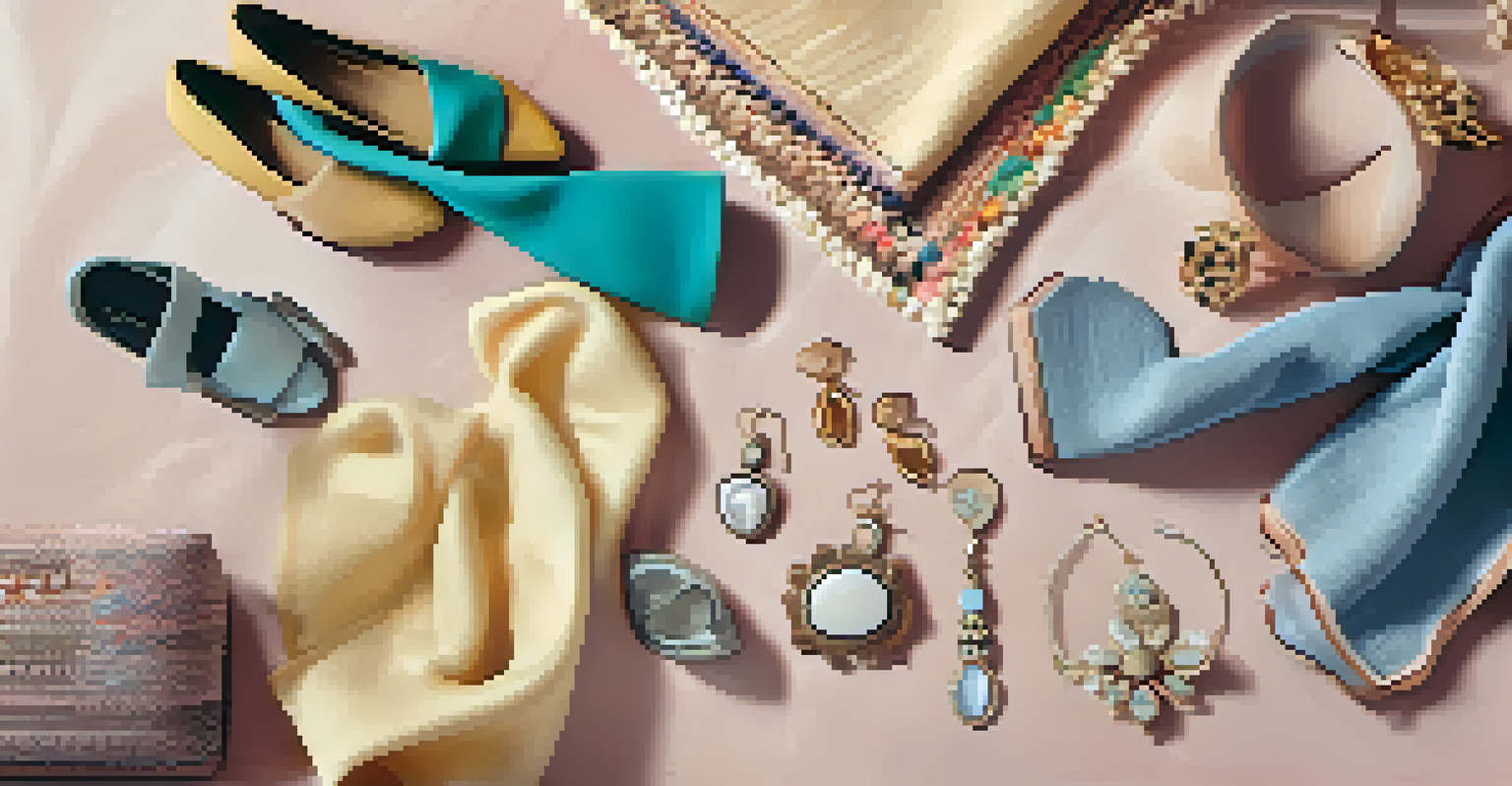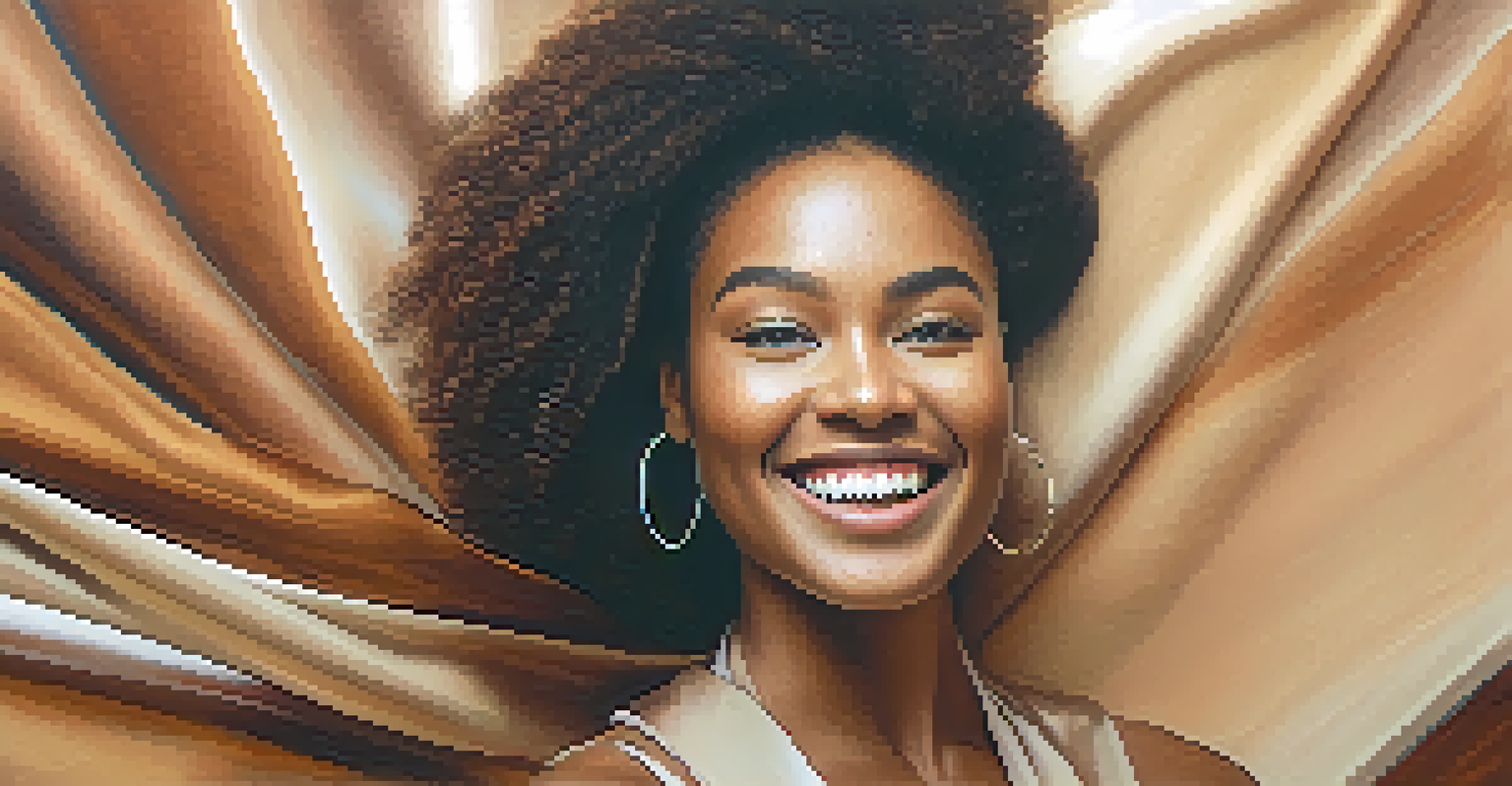Fashion Weeks and Their Influence on Body Image Standards

Fashion Weeks: A Global Stage for Trends and Ideals
Fashion weeks are not just about showcasing new collections; they are influential platforms that set trends and standards in the fashion industry. Designers, models, and brands come together to present their visions, capturing the attention of millions. This global exposure often shapes public perceptions of beauty and body image, creating ideals that can be aspirational yet problematic.
Fashion is the armor to survive the reality of everyday life.
Every season, the runways become a reflection of what is deemed fashionable, with certain body types often dominating the scene. This can lead to a narrow definition of beauty that excludes many individuals, influencing how people see themselves and others. As we consume these images, we may subconsciously adopt these standards, impacting our self-esteem and body confidence.
Moreover, the influence of fashion weeks extends beyond the industry itself, spilling over into media, advertising, and everyday life. The images we see can create a ripple effect, encouraging individuals to conform to a specific aesthetic. This highlights the responsibility of the fashion industry to embrace diversity and inclusivity, promoting a broader range of body types.
The Evolution of Body Image Standards in Fashion
Historically, body image standards in fashion have leaned towards the ultra-thin ideal, often glorifying a singular look. However, as societal values evolve, there is a growing recognition of the need for diversity in body representation. This shift is crucial because it not only reflects reality but also fosters acceptance and self-love among individuals who don’t fit traditional molds.

As we navigate through the years, we’ve seen movements within the fashion industry that challenge these long-held standards. Plus-size models, body-positive campaigns, and inclusive brands are gaining traction, advocating for a more realistic portrayal of beauty. This evolution signals a positive step towards inclusivity, allowing people to see themselves represented on the runway and in marketing.
Fashion Weeks Influence Body Ideals
Fashion weeks shape public perceptions of beauty and body image, often promoting narrow standards that can impact self-esteem.
Nevertheless, change is slow, and many fashion weeks still predominantly showcase a limited range of body types. The challenge lies in shifting the mindset of designers and brands to embrace a more inclusive approach that resonates with a diverse audience. Until then, the impact of fashion weeks on body image standards will remain a complex and ongoing conversation.
The Role of Social Media in Shaping Body Image
Social media has become a powerful tool for influencing body image standards, particularly in the context of fashion weeks. Platforms like Instagram and TikTok allow designers and models to showcase their work in real-time, often reaching larger audiences than traditional media. This accessibility can be a double-edged sword, as it amplifies both diversity and unrealistic beauty standards.
The most beautiful thing you can wear is confidence.
On one hand, social media has enabled the rise of body-positive influencers who challenge conventional beauty norms and promote self-acceptance. These voices can inspire many to embrace their unique bodies, creating a supportive community. Yet, on the other hand, the prevalence of edited images and curated feeds can perpetuate unrealistic expectations of beauty, leaving some feeling inadequate.
The impact of social media is particularly pronounced during fashion weeks when the buzz around collections and models can dominate online conversations. This phenomenon highlights the importance of responsible content-sharing and the need for authenticity in the fashion narrative. Ultimately, it's about finding balance and recognizing the power of representation in shaping body image.
Diversity and Inclusion: Progress in the Fashion Industry
In recent years, there has been a significant push for diversity and inclusion within the fashion industry, particularly during fashion weeks. Many designers are now making a conscious effort to feature models of various sizes, ethnicities, and backgrounds. This shift is vital, as it allows for a more authentic representation of beauty that resonates with a broader audience.
The presence of diverse models on the runway not only challenges traditional beauty standards but also empowers individuals from different backgrounds to see themselves represented. This visibility can foster a sense of belonging and encourage self-acceptance, which is essential for promoting positive body image. It's a step towards breaking the mold and redefining what it means to be beautiful.
Social Media's Role in Body Image
Social media amplifies both body positivity and unrealistic beauty standards, influencing how individuals perceive themselves during fashion weeks.
However, while progress has been made, there’s still a long way to go. The fashion industry must continue to advocate for inclusivity, ensuring that all body types are celebrated. This ongoing commitment will play a crucial role in shaping body image standards for future generations.
The Psychological Impact of Body Image Standards
The standards of beauty promoted during fashion weeks can have profound psychological effects on individuals. For many, constant exposure to idealized images can lead to feelings of inadequacy, low self-esteem, and body dissatisfaction. This is particularly concerning among young people who are still forming their self-image and identity.
Moreover, the pressure to conform to these beauty ideals can result in unhealthy behaviors, including disordered eating and negative body image. The fast-paced nature of fashion weeks, coupled with social media's reach, exacerbates these issues, making it even more challenging for individuals to feel comfortable in their own skin. It's essential to recognize the potential harm these standards can inflict.
Conversely, when the fashion industry embraces diversity and promotes a wider range of body types, it can positively influence mental health. Celebrating all forms of beauty encourages individuals to accept themselves and fosters a more supportive environment. As the conversation around body image continues to evolve, it’s crucial to prioritize mental well-being alongside fashion.
Brands Leading the Charge for Change
Several brands have emerged as pioneers in promoting body positivity and inclusivity within the fashion industry. These companies recognize the importance of representing a diverse range of body types and backgrounds, setting an example for others to follow. Their commitment to inclusivity not only resonates with consumers but also reflects a broader societal shift towards acceptance and diversity.
By featuring models of various sizes and shapes, these brands challenge the status quo and encourage consumers to embrace their unique bodies. This proactive approach can lead to increased customer loyalty, as individuals feel seen and appreciated. It’s a win-win situation for both the brands and their audience, fostering a positive cycle of representation.
Push for Diversity in Fashion
There is a growing movement within the fashion industry towards inclusivity, encouraging representation of diverse body types and backgrounds.
However, it’s essential for these brands to maintain authenticity and ensure that their commitment to diversity is more than just a marketing tactic. Genuine efforts to promote inclusivity will ultimately resonate with consumers and drive meaningful change in the industry. As more brands take this approach, we can hope to see a lasting impact on body image standards.
The Future of Body Image Standards in Fashion
Looking ahead, the future of body image standards in fashion is poised for transformation. With growing awareness around mental health and self-acceptance, there is an increasing demand for brands to prioritize inclusivity and diversity. This evolution signals a shift towards a more holistic view of beauty that embraces all individuals, regardless of size or background.
As fashion weeks continue to adapt to these changes, we may witness a broader range of models on the runway, showcasing the beauty of diversity. This change can help dismantle harmful stereotypes and encourage a more positive body image among consumers. The fashion industry has the power to influence societal norms, and embracing this responsibility is crucial.

Ultimately, the future will depend on the collective efforts of designers, brands, and consumers. By advocating for inclusivity and celebrating all body types, we can reshape the narrative around beauty standards. Together, we can create a fashion landscape that inspires self-love and acceptance for everyone.